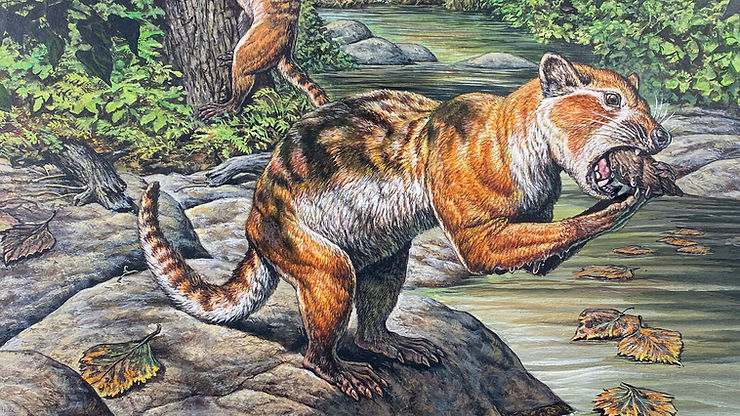By: Claire Zhou
About 30 million years ago, a bear-raccoon-otter-like mammal, called Eoarctos vorax, lived near a river near present-day North Dakota. This bear had n large appetite and used their teeth to crush shells.
The fossil of this bear was first found by paleontologists in 1982. “It’s a fabulous specimen that is just exquisitely preserved,” said Xiaoming Wang, a paleontologist at the Natural History Museum of Los Angeles County. “This animal is really telling us a lot of stories,” he said, adding that his team had also found five other members of this species. The skeleton of this bear had included a baculum. A baculum is a penis bone that is found in many other mammals but is rarely preserved.
Based on comparisons with other living and extinct animals, Dr. Wang’s team placed the creature in early the evolution of mammal carnivores. A group that includes the dog family and animals that are catlike and bearlike. The scientists could tell that it belonged to the arctoids, a group of carnivores that includes bears, raccoons, otters, and others. This animal, though, was not the ancestor of modern bears. “It’s a small side branch, but it’s a very important side branch,” Dr. Wang said.
The Eoarctos vorax’s skeletal features was very similar to raccoons. This bear was only about two feet long, and Dr. Wang said that the creature was most likely terrestrial. It had flat feet and that would have helped them walk long distances on the ground.
A dental exam showed that the animal had a few broken teeth, which led scientists to the conclusion that they probably have been eating very hard things. Dr. Wang’s team said that the Eoarctos seems to be one of the first carnivores that were able to crush such hard objects with their jaws. And that these bears probably ate mollusks by breaking their shells like otters do.
Dr. Wang said that eating is probably what the animal did most of the time resulting in worn-out teeth, infections, and more. But this fossil made a big contribution to science.











